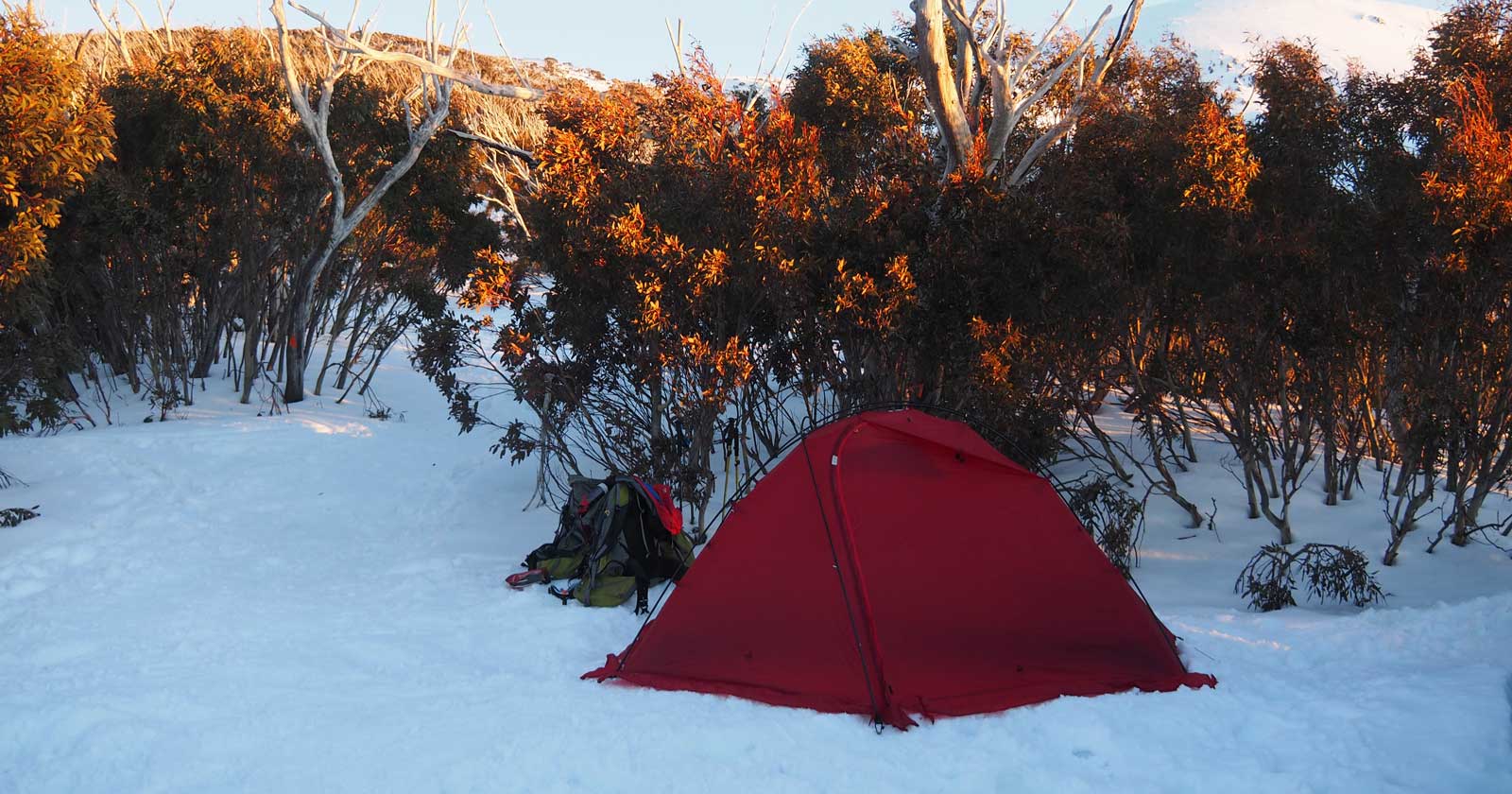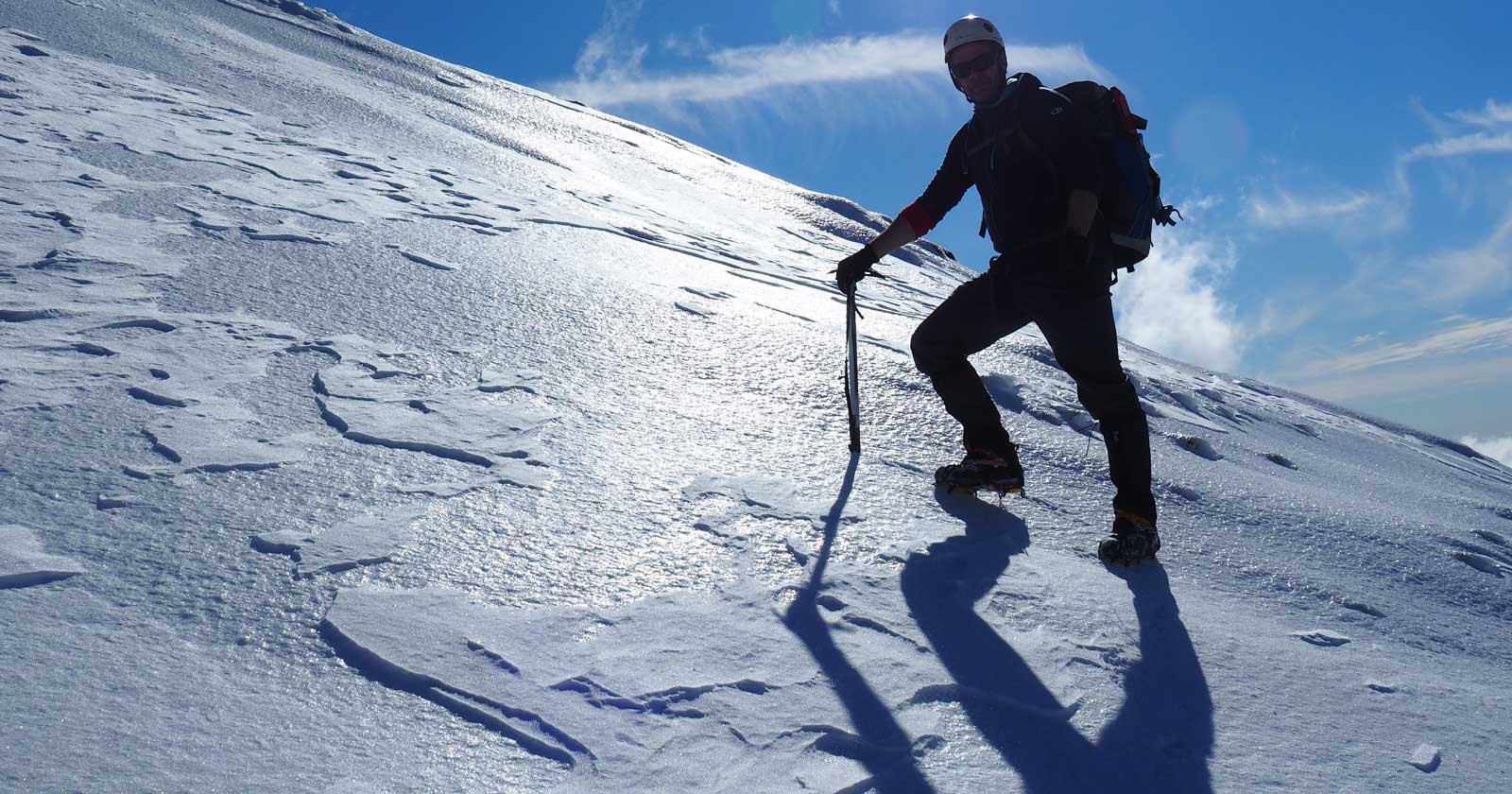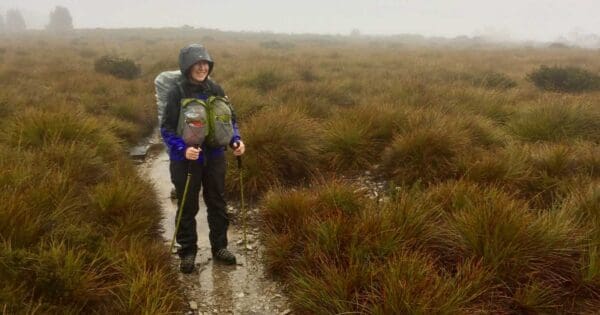Daylight hours might be shrinking, but don’t rush to pack away your hiking boots. Winter offers a whole new way to experience the outdoors. Imagine crisp, clear days invigorating your lungs as you navigate snow-covered trails adorned with frosted snowgums. Trade the summer crowds for a secluded winter wonderland and step out on a spectacular winter hike with friends.
Australia’s stunning landscapes are a joy to explore year-round, but winter hiking presents unique challenges. The beauty of the season can be deceptive, and unprepared hikers can find themselves in serious danger. As an article in The Conversation highlights, “Being unprepared for Australia’s harsh terrain can be deadly“. Treacherous weather conditions, like sudden snowstorms or freezing temperatures, coupled with a lack of preparation, can lead to accidents, hypothermia, dehydration, or even getting lost.
This guide, packed with valuable tips and insights, will help you prepare for a winter hike that’s both safe and truly rewarding. Explore the beauty of Australia’s winter landscapes with greater confidence and discover the hidden magic of the colder months.

Planning is Key
Before you hit the trail, take some time to plan your winter adventure:
- Choose your trail wisely: Not all regions in Australia experience the same winter conditions. Tasmania and the Australian Alps are hotspots for snow, while other areas might have lower temperatures and occasional frosts. Research trails that are well-maintained in winter and suited to the expected conditions. Consider factors like elevation gain, accessibility, and potential hazards like avalanches or black ice. Land manager websites and local hiking clubs are great resources for finding winter-friendly trails.
- Winter difficulty and underestimation: Even a seemingly easy summer trail can become a challenging slog in winter. A dusting of snow can significantly slow you down, and navigating uneven, snow-covered terrain requires more effort. Always be prepared for winter conditions to be more difficult than they appear.
- Shrinking daylight hours: As the sun dips lower in the winter sky, your window for exploration does contract a bit. However, with a little planning, you can still have an amazing winter hike.
- Plan for an early start: Take advantage of the clear mornings and get out on the trail before the sun dips too low. This will give you ample time to complete your hike comfortably and safely.
- Check sunrise and sunset times: Before you head out, be sure to research the specific sunrise and sunset times for your chosen date and location. This will help you determine a realistic route length and avoid getting caught out after dark.
- Embrace the early twilight: While shorter daylight might seem like a limitation, enjoy the unique atmosphere it creates. The earlier twilight can bathe the landscape in a soft, golden light, offering a serene and peaceful experience for your hike.
- Losing your way in poor visibility: Australian winter weather can be unpredictable. While the skies might be clear when you set out, snowstorms or freezing rain can roll in quickly, reducing visibility to near zero. In these conditions, it’s easy to lose sight of landmarks and veer off course. Always be prepared to navigate in bad visibility by having a map, compass, and the knowledge to use them. Familiarity with your chosen trail beforehand is also crucial. If you’re unsure about your route in low visibility, don’t hesitate to turn back.
- Reliable navigation: While GPS devices are helpful tools, they can malfunction, lose charge, or lose signal in remote areas. Familiarity with a map and compass is an essential skill for winter navigation. Snow can obscure landmarks, making it easy to lose your way. Invest in a good quality map of your chosen trail and practice using it before your hike. Download offline maps on your phone as a backup but be prepared for battery drain in cold weather.
- Personal locator beacon: For added security, carry a Personal Locator Beacon (PLB). A PLB is a critical safety device that allows you to send a distress signal directly to search and rescue satellites, regardless of phone reception.
- Communication is vital: Mobile phone service can be unreliable in certain regions, especially in mountainous areas. Consider buying or renting a satellite communicator, which allows you to send SOS alerts and two-way text messages. This can be a lifesaver in case of emergencies.
- Carry a portable charger: Remember, phone batteries drain faster in cold weather, so be mindful of your usage and consider bringing a portable charger. Download offline maps on your phone as a backup for navigation.
- Consulting local experts: No matter how well you plan, there’s no substitute for local knowledge. Before you set out on your winter hike, consider consulting with experienced hikers or park rangers familiar with the specific area you plan to explore. They can provide valuable insights about current conditions, potential hazards, and any hidden gems to add to your adventure.
- Tell someone your plans: Always inform a trusted contact about your hiking plans. Share your detailed itinerary, including the trail name, estimated return time, and the people you’ll be hiking with. This crucial step allows for faster response times in case of an emergency. You can use this online trip intentions form.
- Securing valuables during rescue: While search and rescue teams do their best to recover everything, it’s not always guaranteed. To be on the safe side, keep essential items like your phone, car keys, wallet, and any medications you need close at hand. Secure them in a pocket on your person in case you need to be evacuated and leave your backpack behind.
- Pack for emergencies: Pack a repair kit for minor gear malfunctions, a headlamp with extra batteries, and a comprehensive first-aid kit. Always plan for contingencies and unexpected situations.

Layering Up for Winter Comfort
The key to staying warm and comfortable on a winter hike lies in mastering the art of layering. Think of it as building your own personal thermal armor to shield yourself from the elements. Here’s a breakdown of the essential layers:
- Base Layer (wicking layer): This innermost layer is the foundation of your warmth system. Opt for merino wool or synthetic fabrics like polyester that wick moisture away from your skin. Dry skin is essential for staying warm, so avoid cotton here as it traps moisture and chills you down quickly. Consider a slightly looser fit for better breathability, especially during exertion.
- Mid Layer (insulating layer): This layer traps your precious body heat to keep you warm. Popular choices include fleece jackets, down jackets, or synthetic insulated jackets. The thickness and warmth level will depend on the expected temperature range. Here’s a pro tip: layering a lighter fleece over a midweight base layer allows for more adjustability throughout your hike. As you exert yourself, you can unzip or remove layers to avoid overheating and sweating.
- Outer Layer (shell layer): The final layer acts as your shield against the elements. Look for a waterproof, breathable shell jacket with a Durable Water Repellent (DWR) finish. This will protect you from wind, snow, and rain. Windproof qualities are equally important, as wind can significantly increase the wind chill factor and accelerate heat loss. Consider features like pit zips on your shell, which allow for additional ventilation when needed.
Don’t forget about your extremities! Invest in a good pair of warm, moisture-wicking socks made from wool or a wool blend. Similarly, pack a warm hat and gloves to prevent heat loss from your head and hands. Consider touchscreen compatible options for gloves if you need to use your phone or GPS device.

Winter Gear Essentials
Winter hiking requires some specialised gear compared to summer hikes:
- Warm hat and gloves: A significant amount of body heat escapes through your head and hands. Pack a warm hat, a beanie for extra warmth during breaks, and a good pair of winter gloves. Consider touchscreen compatible options for using your phone or GPS device without exposing your fingers to the cold.
- Sun protection: Snow reflects UV rays intensely, so don’t underestimate the power of the winter sun. Pack sunscreen, sunglasses, and lip balm to prevent sunburn and protect your eyes.
- Winter socks: For winter hikes, ditch cotton socks and choose wool or synthetic socks. Wool offers good warmth and moisture-wicking, while synthetics excel in very wet conditions. Consider a layering approach with liner socks made from synthetics under thicker wool socks for added comfort and moisture management. Choose the sock thickness appropriate for your boots and expected weather conditions.
- Insulated hiking boots: For snowy terrain, invest in a good pair of insulated winter hiking boots with good traction. Look for features like a waterproof membrane and aggressive treads for maximum grip on snow and ice.
- Gaiters: These lightweight fabric shields prevent snow from getting into your boots, keeping your feet warm and dry. They also provide an extra layer of protection against scratches from bushes or sharp rocks hidden beneath the snow.
- Hiking poles: Hiking poles are a valuable tool for winter hiking. They provide extra stability on slippery terrain and uneven surfaces. Additionally, you can use them to probe the snowpack to check for hidden rocks, streams, or soft spots.
- Snowshoes (optional): For trails with deep snow, snowshoes will make your hike significantly easier and more enjoyable. They distribute your weight over a larger surface area, preventing you from sinking into the snow with every step.
- Microspikes or crampons: Icy trails can be treacherous. For hikes with icy conditions, invest in a good pair of crampons. If you’re new to using crampons, practice walking and self-arresting with them before you hit the trail. Microspikes or crampons provide extra traction on packed snow and ice, reducing the risk of slips and falls. Choose the right tool based on the expected conditions. Microspikes are sufficient for light ice, while crampons offer more aggressive traction for steeper icy terrain.
- Ice axe (optional): An ice axe can be a valuable tool for self-arrest in case of a slip on steep snow or ice. However, it’s important to know how to use an ice axe properly before heading out on your hike. If you are not comfortable using an ice axe, it’s best to stick to trails with minimal risk of steep snow or ice.
- Emergency shelter: Always carry an emergency shelter, such as a bivy sack, in your backpack. This lightweight, heat-reflective bag can provide vital protection from the elements if you become stranded or need to wait for help.
- The 10 Essentials: Always consider packing the 10 essentials of hiking, regardless of the season. This list includes a map and compass, navigation tools, emergency shelter, insulation (like a bivy sack), headlamp with extra batteries, sun protection, first-aid kit, fire starter, repair kit, and extra food and water.
A few years back, Julie (my wife) and I enjoyed a winter ascent of Victoria’s highest peak (Mount Bogong). We packed what we thought was the necessary gear for the conditions. However, as we made our way up Staircase Spur, the seemingly harmless fresh powder snow transformed into a challenging workout. With every step, we sank waist-deep in snow, making the going incredibly slow and draining our energy fast. The add to our frustration, right next to use were clear snowshoe prints alongside our path – a stark reminder of essential gear we’d not really considered. Snowshoes added to the shopping list.
For us, this experience was a valuable reminder: thorough preparation is key to a safe and enjoyable winter hike. Don’t underestimate the importance of having the right gear, especially when venturing into challenging conditions.

Winter Overnight Hiking: An Unforgettable Adventure
Winter overnight hikes offer a unique and transformative experience. Imagine yourself nestled in a cozy tent under a blanket of stars, surrounded by the pristine beauty of a winter wonderland. The crisp air and serene silence create a magical atmosphere unlike anything you’ll find during summer hikes. However, venturing out for an overnight winter adventure requires even more meticulous planning and preparation compared to day hikes. Here’s a breakdown of some essential gear considerations for a safe and comfortable winter overnight hike:
Winter Weather Considerations:
- Checking the forecast is essential before any hike, but in winter, it’s even more critical. Look beyond the temperature and pay attention to the wind chill factor, expected snowfall amounts, and avalanche bulletins if you’re venturing into avalanche terrain. Avoid setting out in conditions with high winds, heavy snowfall, or freezing rain. These conditions can significantly increase the difficulty and danger of your hike.
Shelter:
- Tent: Upgrade to a four-season tent specifically designed for winter conditions. Look for features like a strong, wind-resistant frame, a waterproof fly with good snow shedding capabilities, and ventilation options to prevent condensation buildup inside.
- Sleeping bag or quilt: Select a sleeping bag or quilt with a temperature rating that’s significantly lower than the anticipated nighttime temperatures. Consider a down sleeping bag for its exceptional warmth-to-weight ratio, but remember that down loses some insulating ability when wet. If down isn’t ideal for the expected conditions, a high-quality synthetic sleeping bag is a good alternative.
- Sleeping pad: Invest in a high-quality insulated sleeping pad with a high R-value. This R-value indicates the pad’s thermal resistance, ensuring proper insulation from the cold ground.
Cooking Gear:
- Backpacking Stove: A reliable backpacking stove with winter fuel canisters is essential. Winter fuel canisters are formulated to perform well in cold temperatures, unlike standard canisters that may struggle to ignite.
- Cooking Supplies: Pack lightweight, compact cookware and utensils suitable for winter use. Opt for pre-packaged meals that are easy to prepare and high in calories to fuel your body throughout the hike.
Other Overnight Essentials:
- Headlamp: Extra batteries are even more crucial for overnight adventures, as daylight hours are shorter in winter. Consider a headlamp with a red light setting that preserves night vision during nighttime navigation.
- Emergency Shelter: Include an emergency bivvy sack in your backpack. This lightweight, heat-reflective emergency shelter can provide vital protection in case of unforeseen circumstances.
Before heading out on your overnight hike, practice setting up your tent and using your winter gear in similar conditions. This familiarisation process can help identify any potential issues and ensure a smooth and enjoyable experience on your actual adventure.
Remember, minimising your impact on the environment is crucial, especially during winter when ecosystems are more fragile. Regardless of when you hike, always follow “Leave No Trace” principles to protect the natural beauty you came to explore.

Winter Hiking Safety Tips
Winter hiking presents unique challenges, so prioritising your safety is really important. Here’s some things to keep in mind:
- Plan for Changing Weather: Weather conditions in winter can be unpredictable. Be prepared for harsher conditions than what the forecast predicts. Pack extra layers of clothing and rain gear in case you encounter unexpected snow or freezing temperatures.
- Know Your Limits: Be honest about your experience level and choose a trail that is appropriate for your skillset. Don’t attempt challenging hikes in winter if you’re a beginner. If you’re in a group, base the plan on the least experienced/able person.
- Turnaround Time is Crucial: Set a firm turnaround time for your hike and stick to it religiously. This ensures you have ample time to descend before nightfall or worsening weather conditions.
- Always Tell Someone your Plan: where you’re headed, your estimated return time, who you’ll be with.
- Know How to Use your Gear: Make sure you are comfortable using any technical winter hiking gear you bring.
- Stay Hydrated: Dehydration is a risk even in cold weather. Sip water regularly throughout your hike, even if you don’t feel thirsty. Consider using an insulated hydration bladder to prevent your water from freezing.
- Be Aware of Hypothermia: Hypothermia is a dangerous condition that occurs when your body loses heat faster than it can produce it. Recognise the signs of hypothermia, which include shivering, fatigue, confusion, and slurred speech. If you suspect hypothermia, seek shelter and medical attention immediately.
You don’t have to stay indoors as the weather gets colder. By being prepared and planning thoroughly, you can ensure your winter hike in Australia is a safe, enjoyable, and truly rewarding experience. The beauty of winter landscapes, from snow-capped peaks to frosted gum trees, is worth exploring. But remember, adventure should never come at the expense of safety. So, embrace the crisp air and invigorating wilderness, and get ready to discover a whole new perspective on Australia: the hidden beauty of winter hiking. Get ready for an unforgettable adventure.






Love hiking in winter. Feels so quiet and peaceful on the trail. I also find it slows down my hikes, not because it’s physically more challenging, but it takes more time to appreciate the intricate beauty of the landscape.
I snowshoed for the first time last winter and loved it. My question is what to wear on your legs? I wore my normal hiking pants with rain pants over the top but is there a better option? I’d like to get out there more this winter.
Gee Young a few of my mates are right into winter hiking and they wear gaiters that you put your entire foot inside. I’m not that hardcore so just wear snow pants with my normal gaiters over the top.